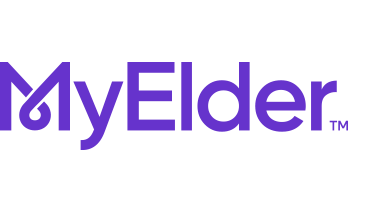
A Looming Shortage Of Geriatricians Will Severely Affect Our Aging Adults
My younger son and his wife recently blessed us with a baby girl. She is a beautiful little 4-month-old, healthy, and gorgeous little girl. Recently, I asked my son for permission to tag along for her monthly pediatric visit. My purpose was to see the difference in how children and adults receive health care.
When we arrived for our appointment at the local hospital pediatrics clinic, we were welcomed by a fantastic bunch of friendly and knowledgeable professionals: doctors, nurses, paraprofessionals, educators, and support staff. I was overwhelmed with a sense of deep caring and professionalism. It was all very organized and smooth.
It was a great experience, and while I was thrilled that my granddaughter was receiving such top-notch care and was healthy, my heart sank because hundreds of thousands of aged adults can’t avail themselves of the same quality experience. There is a severe shortage of geriatricians in the United States. We only have 7,000 geriatricians for an over-65 population of 54 million. Experts suggest that we need at least 40,000. In contrast, we have over 50,000 pediatricians for 74 million children.
Geriatrics is one of the few medical specialties in the United States that is contracting even as the need increases, ranking at the bottom of the list of specialties that internal medicine residents choose to pursue. The United States is facing a shortage of geriatricians as the number of older adults outpaces the number of newly trained specialists in the field.
A geriatrician is a physician already certified in internal or family medicine who has completed additional training in caring for older adults. In addition to providing clinical care, geriatricians are skilled in navigating the labyrinth of psychological and social problems that often arise in the aging population. These doctors understand the dynamics of an older person’s body. They can prescribe treatment methods with the best outcomes for this population segment.
The scarcity of geriatricians in the United States (especially in rural areas) is a severe problem in the public health sphere due to the increased number of older adults and the lack of healthcare professionals who specialize in this demographic.
Approximately 7000 geriatricians practice in the United States, and around half are full-time. Research shows that 30 percent of people 65 years old and older need care from a geriatrician, and each geriatrician can care for up to 700 patients.
The issue of aging is more critical in rural areas because residents tend to be older, on average, than those in urban areas. In 2020, one-third of all adults 65 and older lived in rural areas.
With only 7,000 geriatricians in the U.S., we have only roughly 1.07 geriatricians for every 10,000 geriatric patients. To put this into perspective, the American Geriatrics Society estimates that one geriatrician can care for about 700 patients. This deficit is striking and will have many implications for the senior population in the future. Experts suggest that we need at least 40,000 geriatricians to keep up with current demand.
Part of the reason why the field has not grown significantly over the years is because geriatrics needs to attract more residents. More than one-third of 346 available slots for graduate fellowships in geriatrics—excluding geriatric psychiatry—went unfilled in 2019, according to data from the American Geriatrics Society.
One reason why the field isn’t attracting residents is because geriatricians earn less than other specialists. According to the Medical Group Management Association, total compensation for geriatricians in 2018 averaged $233,564. In comparison, anesthesiologists earn twice as much, and cardiologists and radiologists have salaries topping $500,000.
“Part of the reason aging has such a negative connotation is this sense that you can’t cure older people’s problems,” said Dr. Kenneth Brummel-Smith, a professor of geriatrics at Florida State University College of Medicine in Tallahassee, Fla., a state with a particularly severe geriatrician shortage. “A good geriatrician can bring someone back to functional status.”
People avoid the field for understandable reasons. Geriatrics is among the lowest-paying specialties in medicine. According to the Medical Group Management Association, the median yearly salary of a geriatrician in private practice was $220,000, less than half a cardiologist’s income. Although geriatrics requires an extra year or two of training beyond that of a general internist, the salary for geriatricians is nearly $20,000 less.
Since the health care of older patients is covered mainly by Medicare, the federal insurance program’s low reimbursement rates make sustaining a geriatric practice difficult, many in the field say.
Young physicians in training find it difficult to muster interest in the slow grind of caring for older patients and days filled with discussions about medication management, insomnia, memory loss, and Meals on Wheels deliveries.
That shortage of care and lack of resources means some older adults may never get off waiting lists for care. The impact is even more significant on minority groups who confront income inequality or disparities in access to healthcare, said Angelica Herrera-Venson, an associate director at NCOA. That combination of factors can culminate in more chronic illnesses later in life.
“We still have minority groups — in particular, African Americans and Latinos — that still, compared to non-Hispanic whites, are living their older years in greater disability,” she said.
Some Solutions To Attract More Doctors To Geriatrics
- Higher salaries for clinical geriatricians and trainees
- Improved reimbursement for interdisciplinary care of geriatric patients
- Low-interest loans for the development of academic careers in geriatric medicine
- Training programs that are aimed at amplifying and fostering the research skills of geriatrics fellows.
- Creation of a 4-year dual certification program that would combine 2 years of training in general medicine and 2 years of training in geriatrics medicine
- An aggressive marketing campaign targeted at administrators and students to effect a major change in attitudes toward geriatric medicine, emphasizing the need for marketing professionals to be at the core of this effort.

